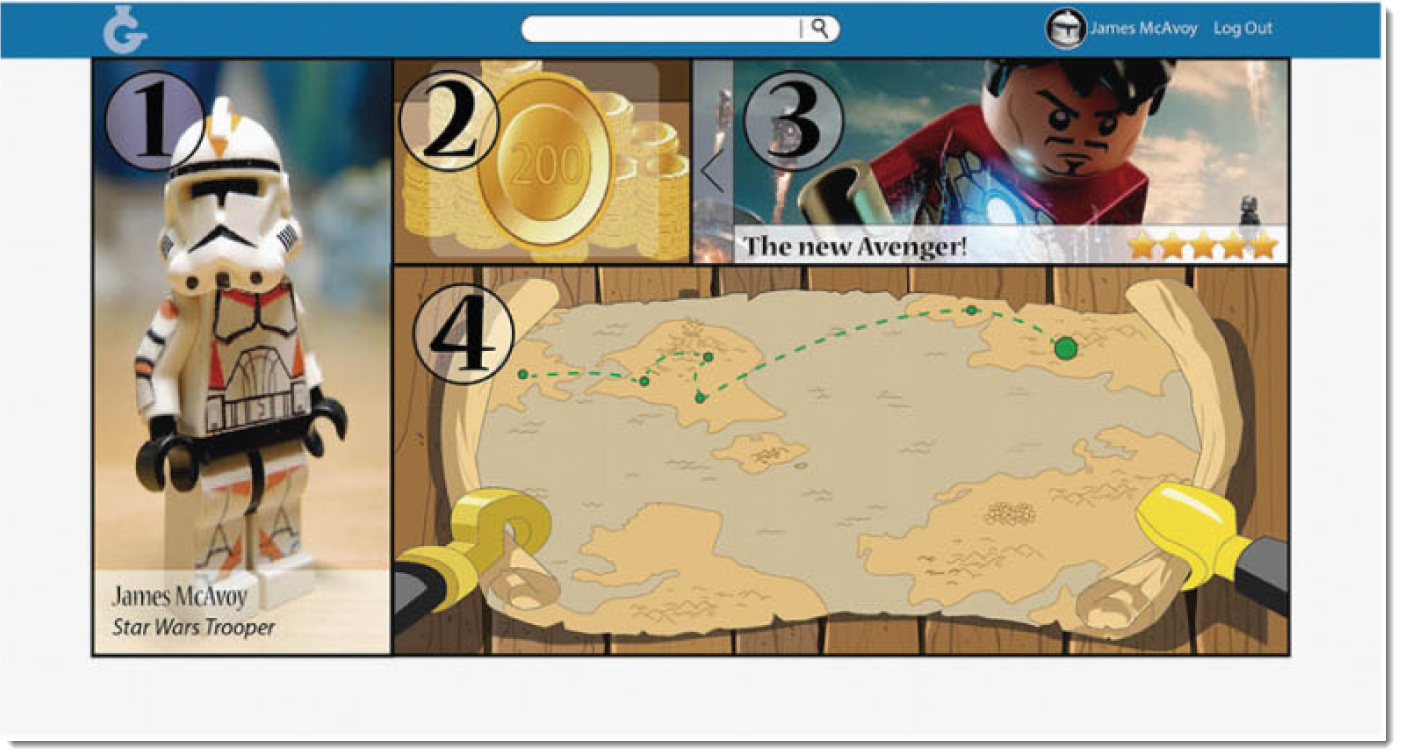One of my graduate courses required a group project as part of a block about the Learning Design Studio. Our project developed a Google Site for our work. This is a copy of my contributions to the group effort, reformatted for this website. The project starts here.
Note: I reference this article in my blog; see Gamification to increase engagement, motivation, and achievement.
Case study on gamification
Brief
The authors of this article wanted to increase student engagement, motivation, and achievement by making class more fun. To do so, they applied game mechanics. With game mechanics:
- You can deliver rewards (for example, with a leaderboard, badges, or loyalty programs)
- Rewards should be a mark of qualification and used to motivate, so that it is not just about the rewards themselves
They wanted to know if gamification increases learning, but they also wanted to know:
- Positive and negative aspects of gamification
- Best platform for gamification in their context
GLABS interface (Villagrasa et al, 2014, p. 48); The students found the learning management system (LMS) confusing because it was not integrated into the game, so the designers created a web interface for the LMS. With this interface, a student profile is an avatar, grades are game scores, learning exercises are missions, and course information is an adventure map.
S.T.A.R.R.
Situation
Context in the case study:
They wanted to increase student engagement, motivation, and achievement by making class more fun. The designers were investigating new technologies, linking them to methodologies and frameworks, and providing a solution for the school and the teachers to use. It seems that the designers were available throughout the initial course to provide some substantial changes as needed.
Comparison with our project:
- In common with our project:
- The designers wanted to create a fun and engaging learning event.
- They wanted to provide a learning path, which is similar to our project in that ours requires meeting different levels of interest or engagement (with some proposed learners wanting to go farther down a learning path than others).
- Unlike our project: They were creating for a group of learners who meet in a face-to-face classroom setting at least weekly and for a set period of time with a specified start and end date.
Task
Tasks (goals, measures of success) in the case study:
- For the course: The goals and criteria were established by the university and department heads, as this was a graded course. The ultimate measures of success were the same as any other university course: the student grades.
- For the project: They did identify several metrics for qualitative and quantitative analysis of usage, uptake and adoption, student satisfaction, and increase in learning. The article did not state who set those metrics.
Comparison with our project:
- In common with our project: Our project could (and likely should) identify metrics by which we can show that we met our goals. The metrics would help with continuous improvement plans and also continued program support by sponsors.
- Unlike our project: There are ethical concerns when trying new programs with students who are attending a class for a grade (and with the real costs of tuition fees and loss-of-opportunity in their work contexts as they study). Our project does not face that level of ethical concern.
Actions
Actions taken by the designers:
- Researched and chose appropriate methodologies and techniques (they chose problem-based learning, quest-based learning, learning by doing, and gamification techniques).
- Researched and adopted accepted principles for ensuring high student adoption/usage rates for educational technology.
- Researched and selected a framework (TPACK).
- Identified metrics and ways to conduct qualitative and quantitative analysis.
- Investigated appropriate technology and tools.
- Built the course.
- Responded to significant issues with the course design and technology.
- Analyzed the results of their work and reflected on lessons learned.
The main thing that went wrong was the LMS. They had chosen one that did not support gamification, and it was too difficult for the students (who felt they were not in an integrated system or course). The designers created a web interface to sit on top of their LMS. This interface supported gamification.
Results
They achieved their goals, but only after fixing the issue with the LMS and its needed interface change.
Reflections
The authors listed many lessons learned. The lessons most applicable for the designer were:
- Realize the importance of having good and integrated systems.
- Be aware that it takes much more time to gamify a lesson than it does to create a traditional lesson plan.
- It is important to have a way to provide feedback quickly, to present a storyline, to use game mechanics for rewards, and to engage learners by competing against each other in groups as well as developing a team to solve a problem collaboratively.

